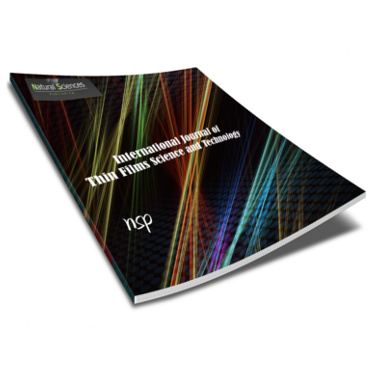International Journal of Thin Film Science and Technology

Abstract
Background: Hypertension is a major risk factor for cardiovascular diseases such as stroke and coronary artery disease as well as causes mortality. The Pilates method is a conditioning program in hypertensive patients of the body and mind that is gaining in popularity and acceptance worldwide. Aim of Study: To determine the response of cortisol hormone level and blood pressure after Pilates exercise in hypertensive post-menopausal women. Methods: Sixty women participated in this study was selected from Belbies Central employees and outpatient clinic with age mean ± SD values in groups (A) and (B) were 52.83 ± 3.89 and 53.37 ± 3.66 yrs., respectively. All of them suffering from high blood pressure stage 2(systolic 140 or higher and diastolic 90 or higher), they took medications (beta blockers - vasodilator – diuretics) and postmenopausal form 1-5 years ago. The study design was pre-post study. Patients were assigned for 8weeks protocol into two groups: Group (A) received Pilates training exercises (bent knee, shoulder bridge, side kick front, side kick back and single leg circle), while Group (B) received only anti-hypertensive medications. Group (A) performed 5 types of Pilates exercises per session for /3 sessions/ week/ 8 weeks. outcome measures were blood pressure (systolic and diastolic), cortisol level, anticoagulant factors (prothrombin time (PT), partial prothrombin time (PTT)) and physical characteristic (weight, body mass index (BMI), and waist hip ratio) were evaluated at the baseline and the end of the study. Results: Pre- and post-treatment comparisons showed a statistically significant decrease of the measured variables in the group A (cortisol level 17.73%, systolic blood pressure 3.70%, Diastole blood pressure 5.01 %, partial prothrombin time 7.38%, where weight 2.92 %, Body mass index 2.98 %) and significant increase in prothrombin time 0.67 %. In group B cortisol level 10.48%, significant decrease in diastole blood pressure 1.73%, no significant increase in (prothrombin time 0.25%, Partial prothrombin time 0.28%, weight 0.64%, BMI 0.34%, waist hip ration 0.11%) as well as no significant decrease in systolic blood pressure 0.75. Conclusion: Pilates exercise program had a positive effect on reducing blood pressure, cortisol hormone, anticoagulant factors (PT, PTT) and Physical characteristic (weight and BMI) in hypertensive postmenopausal women.
Recommended Citation
F. Barghout, H.; A. Abdel Hady, A.; A. Shaheen, A.; and G. El Nahas, N.
(2023)
"Effect of Pilates Exercises on Cortisol Hormone and Blood Pressure among Hypertensive Women,"
International Journal of Thin Film Science and Technology: Vol. 12
:
Iss.
2
, PP -.
Available at:
https://digitalcommons.aaru.edu.jo/ijtfst/vol12/iss2/2

